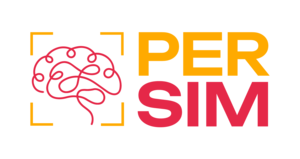
Research Departments
- AI for Assistive Health Technologies 1
- AI in Medical Image and Signal Processing 5
- Agents and Simulated Reality 96
- Augmented Vision 71
- Cognitive Assistants 170
- Cognitive Social Simulation 10
- Cooperative and Autonomous Systems 36
- Cyber-Physical Systems 68
- Data Science and its applications 12
- Design Research eXplorations 12
- Educational Technology Lab 59
- Embedded Intelligence 23
- Experience-based Learning Systems 8
- Foundations of Systems AI 2
- Innovative Factory Systems 41
- Institute for Information Systems 89
- Intelligent Analytics for Massive Data 17
- Intelligent Networks 40
- Interactive Machine Learning 14
- Marine Perception 28
- Multilinguality and Language Technology 134
- Neuro-mechanistic Modeling 1
- Robotics Innovation Center 166
- Smart Data & Knowledge Services 132
- Smart Enterprise Engineering 23
- Smart Service Engineering 19
- Speech and Language Technology 169
Research Topics
- Autonomous Systems 133
- Data Management & Analysis 194
- Human-Machine Interaction 177
- IT Security 41
- Image Recognition & Understanding 82
- Language & Text Understanding 93
- Machine Learning & Deep Learning 252
- Other 161
- Robotics 127
- Sensors & Networks 155
- Virtual & Augmented Reality 48
Fields of application
- Environment & Energy 119
- Farming & Agricultural Technology 50
- Financial Sector 20
- Health & Medicine 140
- Industrie 4.0 170
- Knowledge & Business Intelligence 68
- Learning & Education 89
- Mobility 94
- Other 180
- Smart Home & Assisted Living 54
- Trade & Logistics 54
Displaying results 201 to 210 of 1137.
Research Departments
- AI for Assistive Health Technologies 1
- AI in Medical Image and Signal Processing 5
- Agents and Simulated Reality 96
- Augmented Vision 71
- Cognitive Assistants 170
- Cognitive Social Simulation 10
- Cooperative and Autonomous Systems 36
- Cyber-Physical Systems 68
- Data Science and its applications 12
- Design Research eXplorations 12
- Educational Technology Lab 59
- Embedded Intelligence 23
- Experience-based Learning Systems 8
- Foundations of Systems AI 2
- Innovative Factory Systems 41
- Institute for Information Systems 89
- Intelligent Analytics for Massive Data 17
- Intelligent Networks 40
- Interactive Machine Learning 14
- Marine Perception 28
- Multilinguality and Language Technology 134
- Neuro-mechanistic Modeling 1
- Robotics Innovation Center 166
- Smart Data & Knowledge Services 132
- Smart Enterprise Engineering 23
- Smart Service Engineering 19
- Speech and Language Technology 169
Research Topics
- Autonomous Systems 133
- Data Management & Analysis 194
- Human-Machine Interaction 177
- IT Security 41
- Image Recognition & Understanding 82
- Language & Text Understanding 93
- Machine Learning & Deep Learning 252
- Other 161
- Robotics 127
- Sensors & Networks 155
- Virtual & Augmented Reality 48
Fields of application
- Environment & Energy 119
- Farming & Agricultural Technology 50
- Financial Sector 20
- Health & Medicine 140
- Industrie 4.0 170
- Knowledge & Business Intelligence 68
- Learning & Education 89
- Mobility 94
- Other 180
- Smart Home & Assisted Living 54
- Trade & Logistics 54





